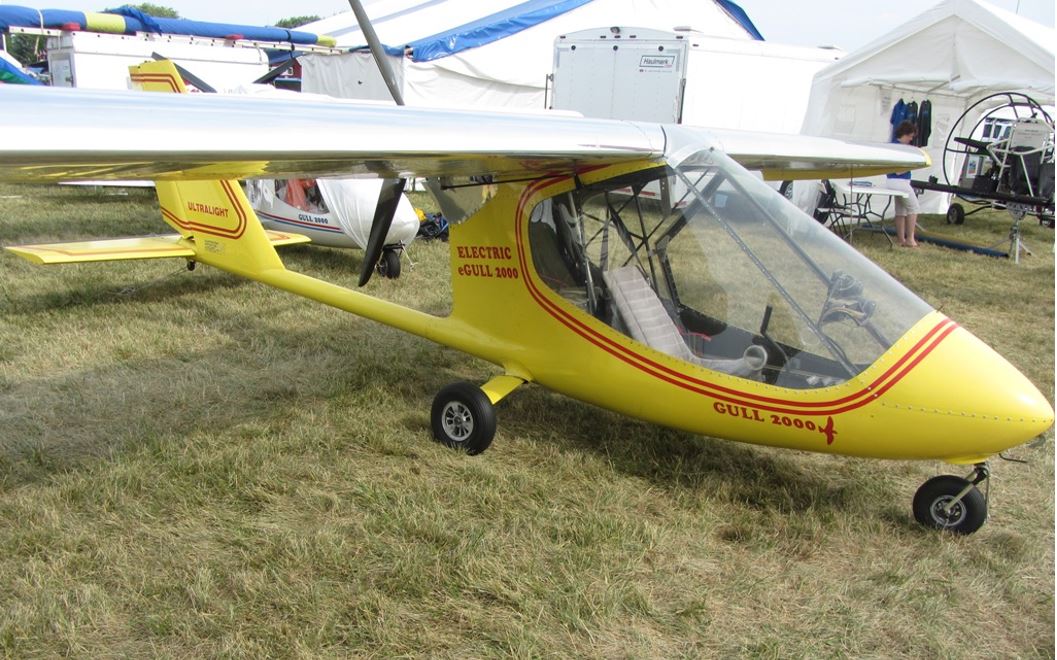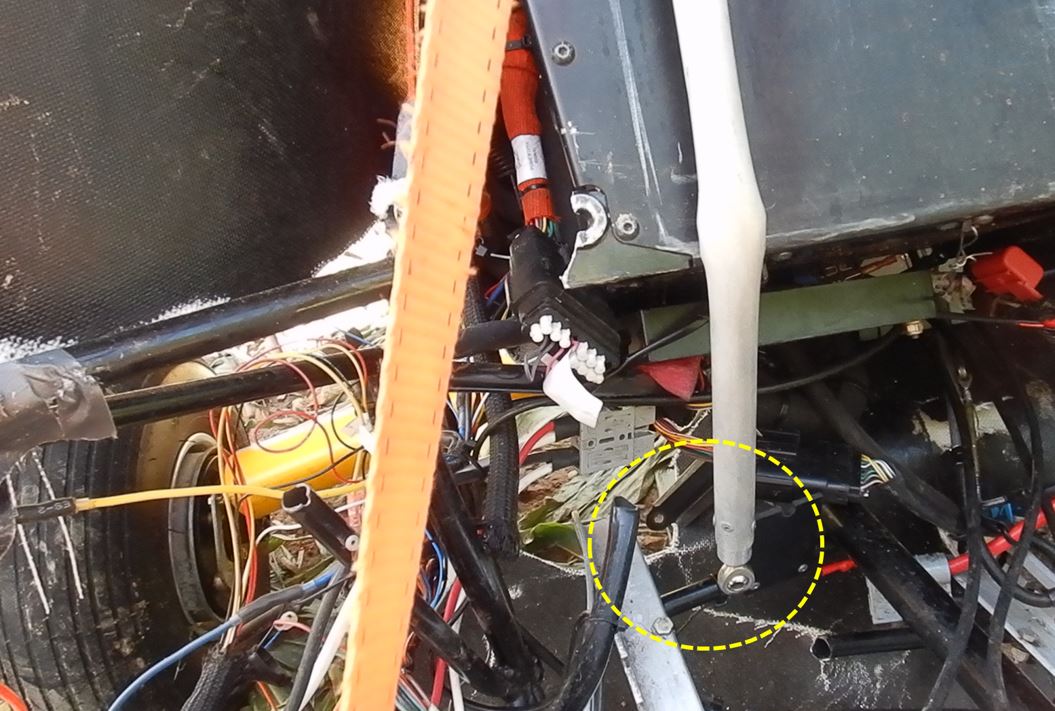Collision with terrain
Privately registered
Earthstar Aircraft eGull (basic ultralight), C-IRAY
Weyman Airpark (CCG3), New Brunswick, 1.25 NM SE
The Transportation Safety Board of Canada (TSB) investigated this occurrence for the purpose of advancing transportation safety. It is not the function of the Board to assign fault or determine civil or criminal liability. This report is not created for use in the context of legal, disciplinary or other proceedings. See Ownership and use of content. Masculine pronouns and position titles may be used to signify all genders to comply with the Canadian Transportation Accident Investigation and Safety Board Act (S.C. 1989, c. 3).
History of the flight
At 1042All times are Atlantic Daylight Time (Coordinated Universal Time minus 3 hours). on 19 July 2024, the privately registered Earthstar Aircraft eGull basic ultralight aircraft (registration C-IRAY, serial number EG1801) departed Weyman Airpark (CCG3), New Brunswick, for a local visual flight rules (VFR) flight. The pilot, who was also the owner of the aircraft, was the sole occupant on board the 1-seater aircraft.
The aircraft proceeded to fly south, around the community of Keswick, about 3 nautical miles (NM) southeast of CCG3. It then headed north to an area approximately 1.5 NM from CCG3. At 1127, after 45 minutes of flying, the aircraft was observed circling at a height of less than 1000 feet above ground, then nosing down and colliding with terrain in a cornfield 1.25 NM southeast of CCG3. The pilot was fatally injured. There was no post-impact fire. The aircraft was destroyed by impact forces.
Local residents notified emergency services of the accident.
Pilot information
The pilot held a recreational pilot permit, which he had obtained in 2021, and a Category 4 medical certificate that was valid until 01 December 2025. He had obtained a glider licence in 1975 and a private pilot licence in 1990; however, the investigation could not determine when the pilot had last flown under those licences, or his total number of flight hours.
Weather information
The weather conditions before and after the occurrence flight were consistent with visual meteorological conditions.
The aerodrome closest to the occurrence site to issue hourly automatic aerodrome routine meteorological reports (METAR AUTO) was Fredericton Airport (CYFC), New Brunswick, located about 15 NM to the southeast.
The hourly METAR AUTO, issued at 1000, indicated the following:
- Winds from 310° true at 6 knots, variable between 200° and 330°
- Visibility of 9 statute miles
- Clear sky
- Temperature 21 °C and dew point 16 °C
- Altimeter setting 29.93 inches of mercury
The METAR AUTO issued at 1100 indicated similar conditions, with only the following changes:
- Winds variable at 5 knots
- Temperature 23 °C
- Altimeter setting 29.94 inches of mercury
Aircraft information
According to the application for registration submitted to Transport Canada for the occurrence aircraft, its maximum take-off weight was 750 pounds, its empty weight was 415 pounds, and its stall speed was 32 mph.
The aircraft had a tricycle gear configuration, composite propeller, and an electric motor from a motorcycle capable of producing up to 52 kW of power (about 70 hp) (Figure 1). The battery capacity allowed for a typical flight duration of 70 minutes.
Basic ultralight regulations
A basic ultralight is defined in the Canadian Aviation Regulations as:
an aeroplane having no more than 2 seats, designed and manufactured to have
(a) a maximum take-off weight not exceeding 544 kg [1200 lb], and
(b) a stall speed in the landing configuration (Vso) of 39 knots (45 mph) indicated airspeed, or less, at the maximum take-off weight.Transport Canada, SOR/96-433, Canadian Aviation Regulations, section 101.01.
Basic ultralights may be used recreationally in Canada in accordance with section 602.29 of the Canadian Aviation Regulations. Occupants of basic ultralights must wear a protective helmet.Ibid., subparagraph 602.29(1)(f)(ii). The occurrence pilot was not wearing a helmet.
Basic ultralights are operated without a certificate of airworthiness, which means that the design, construction, and maintenance of the aircraft are not subject to any form of oversight by Transport Canada. It is the owner’s responsibility to maintain the aircraft so that it is safe for flight.Transport Canada, Ultra-light Aeroplane Transition Strategy (10 October 1996), Section 2.3: Basic Ultra-light Aeroplane Manufacturer/Owner Responsibility.
Impact and wreckage information
The aircraft impacted terrain in a steep nose-down attitude. From the leading edge of the wings forward, the aircraft was crushed. The impact was not survivable.
During the examination of the wreckage, it was discovered that hardware at the attachment between the control column bellcrank and the lower end of the aileron push tube assembly was missing (Figure 2). A bolt with the correct diameter and length was found in the wreckage; however, the matching nut was not found. There was no deformation present on either the bolt or the attach hole of the bellcrank, or damage to the aileron push tube rod end, indicating that the bolt likely fell out before the aircraft impacted the ground. The disconnected aileron push tube would have prevented aileron control, which would have made controlling the aircraft difficult.
Instrumentation was collected from the wreckage and sent to the TSB Engineering Laboratory in Ottawa, Ontario. This included a ProteGear GPS (global positioning system) tracker, a motorcycle instrument panel (for battery monitoring), and an electronic flight instrument system. Other than data from the GPS, which provided position reports at 1-minute intervals, no other data was able to be retrieved.
TSB laboratory reports
The TSB completed the following laboratory report in support of this investigation:
- LP113/2024 – NVM Data Recovery - Various
Safety message
Given that the design, construction, and maintenance of ultralights are not regulated, it is important that aircraft owners understand that they are responsible for ensuring that their aircraft are built and maintained for continued safe flight.
This report concludes the Transportation Safety Board of Canada’s investigation into this occurrence. The Board authorized the release of this report on 29 January 2025. It was officially released on 05 February 2025.

